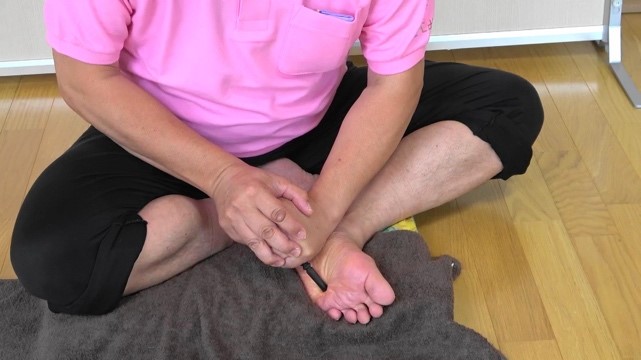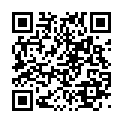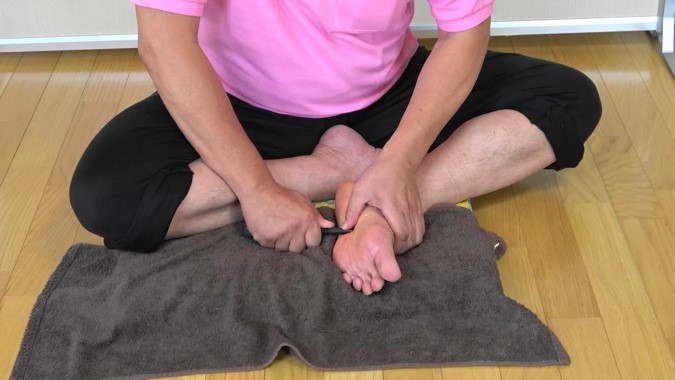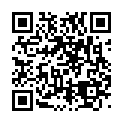新着情報
Ashimomi Juku News August 2022
Ashimomi Juku News August 2022
I love the mountains and go climbing regardless of the seasons.
At the end of last summer, when I climbed Mt. Akagi in my hometown, the lingering summer heat that day was unforgiving and I was perspiring heavily. About halfway up the mountain, I felt nauseous and could not walk another step.
Having never experienced this before, I was a bit startled. I thought about turning back, but I was unable to move. I squatted down for a while and closed my eyes. Since my nausea later subsided, I dropped some hard candy into my mouth and drank a little water. My strength returned and I continued toward the summit. The view there was fine. I had a rice ball and a sandwich and drank some coffee. When my health returned, it suddenly came to me that what I had experienced was heatstroke.
The fact is that a bit before this, I had conducted a Zoom lecture on the topic of heatstroke. I am embarrassed to say that I had indeed actually experienced what I explained in my lecture. (smile)
In addition to being a self remonstrance, I would like to proceed with the theme of measures for heatstroke as the theme for this month’s newsletter.
Summer Fatigue is One Step Before Heatstroke
My trouble on the mountain was two fatigues.
One was sharibate (fatigue from not eating) which is a lack of gas from insufficient fuel. When we do strenuous exercise without eating, our blood sugar drops, our body lacks strength and we are unable to move.
The other was summer fatigue. I had an uneasy sleep from the night before the climb because of the heat, and in addition to very little sleep, I had no appetite, and began to climb as I was because I was familiar with the mountain. In the woods along the path there was no breeze and I was dehydrated more than I believed. Since the symptoms of dehydration include “fatigue,” “loss of appetite” and “insomnia,” they truly match my symptoms.
While an explanation of heatstroke follows, the symptoms of heatstroke and summer fatigue are the same, and symptoms are more severe. That is why I believe that summer fatigue can be called a sign that summons heatstroke.
The Cause of Summer Fatigue Is
When we search for the cause of heatstroke, we arrive at these key words: insomnia, loss of appetite and the consuming of cold things because of the summer heat. When we are exposed to temperature differences from the outside heat to a well airconditioned room and so on, our autonomic nerves are in disarray and our body cannot properly regulate its temperature. It is here that we lose our liquids and minerals (sodium, potassium and calcium) from perspiration and from dehydration, heat is retained within the body and we lose the ability to radiate heat.
Radiate heat becomes a key word. The stimulation of the radiation of heat becomes the countermeasure.
To Avoid Heatstroke
While I have explained this in the cause for heatstroke, from heat and dehydration the body cannot release its heat, its salt and liquid decline, blood pressure falls, the muscles stiffen and the symptoms worsen.
It is important to properly use air conditioning and so forth as measures for heatstroke. Let us, however, not just deal with external matters such as weather conditions, but also think about care from within ourselves.
In this regard, food, cooling and mind are important.
Food
From looking at the cover picture of food, we can imagine foods that even those with no appetite in the summer will surely enjoy with a refreshing feeling.
Reiko Haneda, a food researcher, sent me creative recipes and I had my wife immediately prepare some. We enjoyed them very much.
I hope that our readers will also try them.
Cooling
When baseball pitchers are changed, don’t they apply ice bags to their elbow and upper arm?
Ice packs are not just for sports and injuries, but they are also useful for heat.
Recently there are a variety of designs and sizes for ice pack and ice bags, and they are even sold by one-hundred-yen shops.
When you think that you may be experiencing symptoms of heatstroke, let us engage in the following measures.
●Retire to a cool place.
●Remove your clothing and assume a comfortable posture.
●Apply a wet towel to both sides of the neck, armpits, the inguinal regions and so forth.
●Use a cool pillow and so forth.
●Replace your liquids by such fluids as sports drinks.
●Immediately contact medical facilities when the symptoms seem serious.
Mind
Yatsugatake, which is also my workplace, is a spot of magnificent scenery that is surrounded by mountains.
Even in the summer the morning and nights are cool (at times cold), and since the tap water is taken from nearby spring water, it is cold. It is perfect to cool the boiled soba.
I commute there once a week by car from Gunma. Along the way I pass through Kiyosato Kogen. A bit down the road there is the large Kiyosato Ohashi bridge and a spot where you can fully enjoy the scenes of each of the four seasons. I take visitors to our office to Doryu no Taki, which is just beneath the bridge. By walking in the woods and hearing the sounds of the waterfall, the body and mind are refreshed.
Two Points for Foot Massage
In Chinese medicine, summer is a very important time for the heart and small intestines. Since they are easily overworked, let us thoroughly massage these two reflex centers and protect ourselves from heatstroke.
First, it is important to thoroughly massage the reflex center for the heart and protect ourselves from overheating. Place the stick perpendicular at the bottom of the reflex center and push down upon it and change the angle slightly, and let’s move the stick upward and massage thoroughly. It is good to massage up until the reflex centers for the lungs and bronchus. While it is a bit painful, let us massage strongly for our heart to work in good health.


Since summer is the time when we insist on cold food and drink, our intestines are easily chilled. To improve our digestion and absorption, let us thoroughly massage the small intestines.
With the stick laying somewhat downward, let us massage the reflex center from the part of the heel toward the direction of our toes as though grinding upward while covering a wide area.




